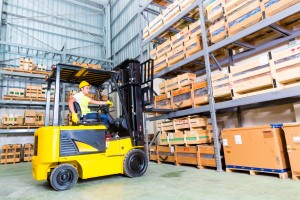 To understand the disadvantages of cross docking, it is important to firstly understand the purpose of the procedure. Cross docking takes products directly from a supplier or manufacturing plant to a customer or retail chain with little to no handling or storage time. Cross docking involves receiving products through an inbound dock, sorting and screening their end destinations, and then moving the products across the dock to the outbound transportation dock in a distribution terminal. Although cross docking saves warehouse real estate, reduces labor costs, and gets products to the customers faster, there are several disadvantages that wise retailers should be aware of.
To understand the disadvantages of cross docking, it is important to firstly understand the purpose of the procedure. Cross docking takes products directly from a supplier or manufacturing plant to a customer or retail chain with little to no handling or storage time. Cross docking involves receiving products through an inbound dock, sorting and screening their end destinations, and then moving the products across the dock to the outbound transportation dock in a distribution terminal. Although cross docking saves warehouse real estate, reduces labor costs, and gets products to the customers faster, there are several disadvantages that wise retailers should be aware of.
Time-Consuming
It may sound like cross docking saves time and increases work productivity; however, management will need to dedicate more time to plan and follow up to ensure the process is working efficiently. If your goal is to make your operations run smoother, cross docking may not be the best solution.
More Capital Investment
By implementing cross docking, companies may be able to save money on labor costs, but setting up the terminal structures is time-consuming and expensive. The structures must be designed in a certain way to make the transference of products run smoothly.
Supplier Trust
Since cross docking relies on a team to transfer items from inbound to outbound, organizations need to be trustworthy of their suppliers’ ability to deliver the correct item and quantity to the terminal on time. Cross docking does not leave much room for error—constant errors can significantly decrease productivity, waste time, and cost an organization their customers due to late or wrong deliveries.
Number of Transport Carriers
To make cross docking a useful system, an adequate number of transport carriers will be needed for the operation. Since the operation is mainly dependant on trucking, there is an increased cost, need for space outside the warehouse for trucks, and need for enough docks to implement the system. Cross docking may not be the solution for organizations hoping to reduce costs.
Risk of Shrinkage
Since products are not packed away in accordance with the specific method or style of the company, the risk of lost inventory or damaged product is increased from using cross docking in the long term.
Get Tangible Results for Your Operations with APS Fulfillment, Inc.
Being aware about these disadvantages and how they could affect your organization is a paramount step for evaluating your supply chain process and whether cross docking is the solution for you. APS Fulfillment, Inc. is a successful product fulfilment and direct mail marketing production facility. Our turnkey, state-of-the-art technology, provides our customers with fast, flexible, precise, and cost-effective solutions. We have knowledge and services to make your business ventures more successful, and can advise you on how to improve your supply chain system. Contact APS Fulfillment, Inc. by e-mail at [email protected] or call us at 1-(954) 582-7450.




